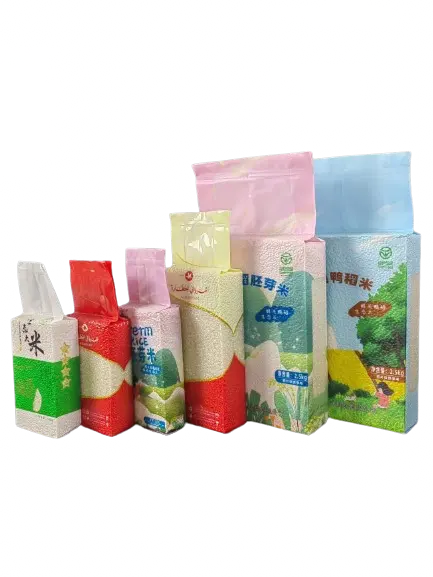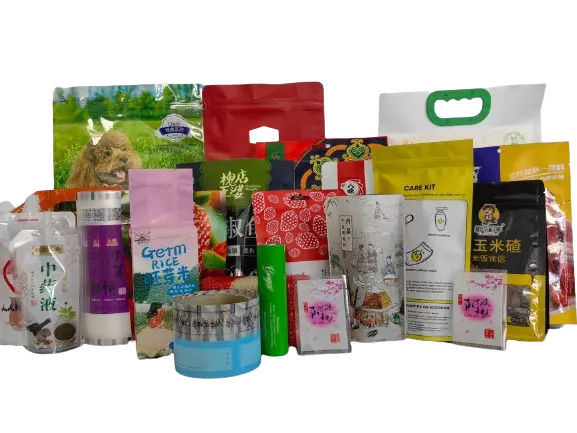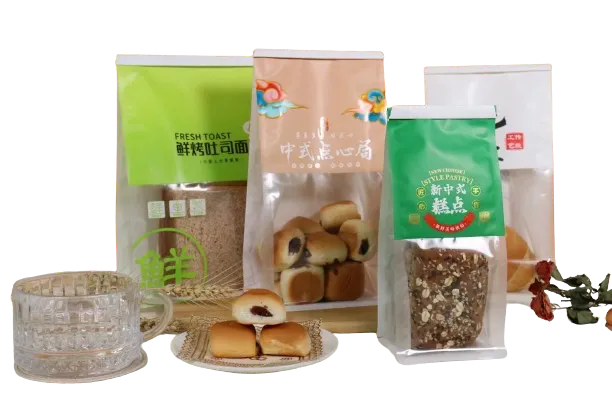WeChat:
+86-189 7322 3283
What’s app::
+86-13630093256
Content Menu
● Understanding the Importance of Food Packaging
● Types of Packaging Bags for Food Freshness
>> High-Density Polyethylene (HDPE) Bags
>> Low-Density Polyethylene (LDPE) Bags
>> Linear Low-Density Polyethylene (LLDPE) Bags
● Benefits of Using the Right Packaging Bags
● How Packaging Bags Keep Food Fresh: Key Mechanisms
>> Modified Atmosphere Packaging (MAP)
● Best Practices for Using Packaging Bags to Keep Food Fresh
>> 1. Choose the Right Bag Material for Your Food Type
>> 4. Store Packaged Food at Recommended Conditions
>> 6. Use Specialized Bags for Liquids
● Innovations in Food Packaging Bags
● FAQ
>> 1. What types of packaging bags are best for fresh fruits and vegetables?
>> 2. How does vacuum packaging extend food shelf life?
>> 3. Are plastic packaging bags safe for food storage?
>> 4. Can packaging bags help reduce food waste?
>> 5. What should I consider when sealing food packaging bags?
Food freshness is a critical factor in ensuring safety, taste, and nutritional value. The right packaging bags play a pivotal role in preserving food quality from production to consumption. Selecting appropriate packaging not only extends shelf life but also reduces food waste and enhances consumer satisfaction. This comprehensive guide explores how to keep your food fresh using the right packaging bags, covering types, benefits, technologies, and best practices.
Food packaging serves multiple functions beyond mere containment. It protects food from physical damage, contamination, moisture, oxygen, and light-all factors that contribute to spoilage. Proper packaging maintains the food’s texture, flavor, and nutritional content while enabling safe transportation and storage. In the fast-paced food industry, innovative packaging solutions are essential to meet consumer demands and regulatory standards.

Choosing the correct type of packaging bag depends on the food product, storage conditions, and shelf life requirements. Below are common types of plastic packaging bags widely used in the food industry:
HDPE bags are lightweight, semi-translucent, and resistant to temperature changes, water, and vapor. They have high tensile strength and meet FDA food handling standards, making them suitable for grocery stores, delis, and restaurants. Their durability helps protect food from external contamination and moisture[3].
LDPE bags are clear, breathable, and flexible. They are commonly used for fresh fruits, vegetables, and bulk food items. Their breathability helps prevent moisture buildup, which is crucial for maintaining freshness in perishable produce. LDPE bags also allow heat sealing due to their low melting point[3].
LLDPE bags offer the same strength as LDPE but with a thinner gauge, allowing cost savings without compromising quality. They are FDA approved and suitable for refrigerated and frozen food storage, providing excellent protection against moisture and oxygen[3].
PP bags are non-breathable and provide excellent chemical resistance and clarity for enhanced product visibility. They are ideal for storing dry foods like herbs, nuts, and candies, where moisture control and shelf life extension are priorities[3].
Vacuum packing bags are airtight plastic bags designed to be used with vacuum sealers. By removing air, they inhibit bacterial growth, prevent freezer burn, and extend shelf life by up to five times compared to traditional storage methods. Vacuum sealing is especially effective for meats, fish, cheese, and ready-to-eat meals[6].
Stand-up pouches consist of multiple layers of barrier films that protect food from UV rays, oxygen, and moisture. They are versatile, visually appealing, and can be resealable, making them suitable for snacks, dried fruits, and other retail food products[4].
Selecting the appropriate packaging bags offers several advantages:
– Extended Shelf Life: Proper packaging reduces exposure to oxygen, moisture, and contaminants, slowing spoilage and preserving freshness[1][6].
– Protection from Environmental Factors: Packaging bags shield food from light, dust, odors, and temperature fluctuations, maintaining product integrity[2][7].
– Reduced Food Waste: By preserving food quality longer, packaging minimizes spoilage and waste at consumer and retail levels[2].
– Enhanced Product Visibility: Clear and printable packaging bags help showcase the product attractively, boosting consumer appeal and brand recognition[2].
– Cost-Effectiveness: Plastic packaging bags are lightweight, require less energy to produce, and are economical for manufacturers of all scales[2].
– Sustainability: Many plastic bags are recyclable and reusable, and innovations in biodegradable materials are emerging to reduce environmental impact[7].
Packaging bags act as barriers to oxygen, moisture, and light-all of which accelerate food spoilage. Materials like EVOH (ethylene-vinyl alcohol) and multi-layer films provide excellent gas barrier properties, preventing oxidation and microbial growth[7].
For fresh fruits and vegetables, breathable bags allow moisture and gases like ethylene to escape, preventing condensation and mold growth. LDPE bags are often used for this purpose[3][5].
Vacuum packaging removes air, especially oxygen, which bacteria need to grow. This method also prevents freezer burn by eliminating moisture exposure. It is highly effective for meats, cheeses, and prepared meals[6][7].
MAP adjusts the gas composition inside the packaging, balancing oxygen, carbon dioxide, and nitrogen to slow spoilage. This technique is common for fresh produce, baked goods, and meat products[7].
Active packaging incorporates substances like oxygen scavengers, ethylene absorbers, and antimicrobial agents that interact with the food or environment to maintain freshness longer[7].

– Use breathable bags like LDPE for fresh produce to prevent moisture buildup.
– Use non-breathable, airtight bags like vacuum pouches for meats and cooked foods to inhibit bacterial growth.
– Consider multi-layer bags with barrier films for products sensitive to light and oxygen.
A strong, airtight seal prevents contamination, leakage, and exposure to air. Use heat sealing or vacuum sealing methods appropriate to the bag type and food product[7].
Mark bags with contents and packing dates to monitor freshness and reduce waste. This is especially important for vacuum-sealed and frozen foods[6].
Maintain appropriate temperature and humidity levels to preserve freshness. Refrigerate or freeze vacuum-packed foods promptly to maximize shelf life[7].
Overfilled bags can compromise seal integrity and cause tears. Leave enough space for proper sealing and handling[6].
Freeze soups or stews before vacuum packing to prevent liquid from being sucked into the vacuum sealer[6].
The food packaging industry is evolving with new materials and technologies:
– Biodegradable and Compostable Bags: Made from natural fibers like bagasse or cornstarch, these bags reduce environmental impact while maintaining food safety[7].
– Multi-Layer Barrier Films: Combining different materials to optimize protection against gases, moisture, and light[4][7].
– Customizable Packaging: Flexible plastic bags can be tailored in size, shape, and design to meet specific product and branding needs[2].
– Recyclable and Reusable Bags: Advances in plastic recycling and bag-making machinery promote sustainability without sacrificing durability[2].
Keeping your food fresh hinges on selecting the right packaging bags tailored to your product’s needs. From breathable LDPE bags for fresh produce to vacuum-sealed pouches for meats, the correct packaging material and sealing method can dramatically extend shelf life, reduce waste, and enhance consumer satisfaction. Innovations in barrier films, active packaging, and sustainable materials are further advancing food preservation capabilities. To maximize freshness, always consider the type of food, storage conditions, and packaging technology. Invest in quality packaging solutions to protect your products and build customer trust.
Ready to enhance your food packaging? Contact our experts today to find the perfect packaging bags that keep your food fresh longer and boost your brand’s value!

Breathable bags such as Low-Density Polyethylene (LDPE) are ideal because they allow moisture and gases to escape, preventing mold and spoilage.
Vacuum packaging removes air, especially oxygen, which inhibits bacterial growth and prevents freezer burn, extending shelf life by up to five times.
Yes, many plastic bags like HDPE, LDPE, LLDPE, and polypropylene are FDA approved and safe for food contact when used appropriately.
Absolutely. Proper packaging preserves freshness longer, reducing spoilage and waste at both retail and consumer levels.
Ensure the seal is airtight and strong to prevent contamination and leakage. Use heat sealing or vacuum sealing methods suitable for the bag type and food product.
Hot Tags: Food Packaging Bag, Custom Food Bags, Flexible Packaging Bags, Stand Up Pouches, Resealable Food Bags, Food Pouch Manufacturer, Food Grade Packaging, Eco-Friendly Food Bags, Printed Food Bags, Vacuum Food Packaging, manufacturers, Customized, custom, suppliers, buy, cheap, Quality, Advanced, Durable, in stock, free sample, made in China, price, quotation